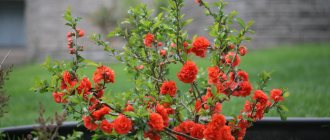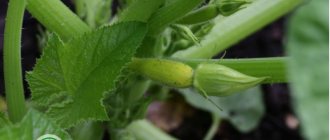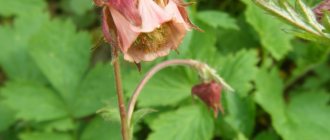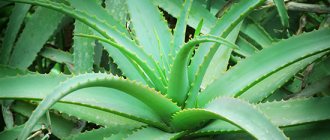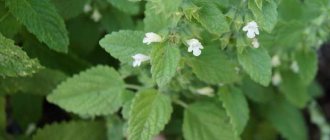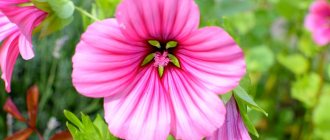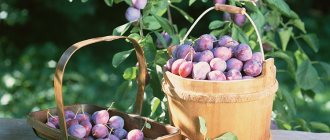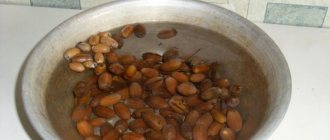Planting and caring for astilbe in open ground is not a labor-intensive task that even a novice gardener can do. Astilbe is an unpretentious perennial garden crop of bush plants that can withstand temperature changes, darkness and is not susceptible to disease. In addition to being easy to grow, astilbe wins hearts with its beauty during and after flowering. The bushes have showy flowers and decorative leaves.
When to plant astilbe in open ground
A low astilbe bush will decorate any darkened place in the garden and add bright colors with its flowering.
When growing beautiful astilbe in open ground, you don’t have to worry about the lack of sun. The perennial grows well in the shade and generously produces flowers even in conditions of constant shade.
Young plants can be planted at any time of the year. The culture is perfectly adapted to the Russian climate and can withstand frosts, cold, rainy summers and even insect attacks. Agricultural companies offer a wide range of seedlings in the spring. Grown bushes of the plant are planted from the beginning of spring to the end of May.
Varieties
There are a huge number of types of astilbe. Among them are hybrid varieties (about 40), Japanese varieties, Korean and Chinese.
Species obtained by crossing the main base species (Astilbe David) with others are called Anders hybrids. Their distinctive characteristics are: spherical, spreading, and the shape of the bush in the form of a pyramid. Bushes with a height of about 1 meter have the longest flowering period (35-45 days: from July to August). The most popular varieties among summer residents include: Dynamite, Gloria, Ruby and Amethyst.
Short (up to 80 cm), cold-resistant and the earliest to bloom, Japanese varieties easily take root in new places and continue to decorate the garden area even after flowering. The most common varieties are Europe, Montgomery, Rhineland and Deutschland.
Tall (about 1.1-1.2 m) Chinese varieties, with fairly large basal leaves and dense inflorescences (35-40 cm long), have successfully taken root on Russian soil. Main varieties: Vision in Pink, Purpurlanze and Vision in Red.
Regardless of the type, such measures as planting astilbe in the fall and caring for it in open ground are important in caring for the plant.
How to plant astilbe in spring
Agronomists recommend planting a perennial bush from March 20 to May 10. For the normal development of the astilbe rhizome, it is necessary to do the correct planting in the spring. Autumn is also great for rooting, but it’s better to do it before the first frost.
Astilbe is a very unpretentious flowering plant. Despite the ease of cultivation, there are simple planting rules that must be followed:
- Preparation of planting material. For spring planting, the purchased bush with a lump of earth is carefully removed from its original container and inspected. When visually assessed, the plants should not have rotten roots or broken stems. The root system should be handled gently so as not to damage the rhizomes;
- Preparing the site. With the onset of spring, after the snow cover melts, the soil dries out and becomes loose. This is the kind of soil that flowering perennials prefer. Astilbe requires a deep hole of 25 - 30 cm. Humus, ash and water are added there. The plant is planted in the resulting mass and sprinkled with earth.
When planting, it is necessary to maintain a distance between seedlings of 50 - 55 cm. Over time, the astilbe bush begins to grow up to 200 cm in height and produce vertical inflorescences with small flowers.
Site selection
For growth and luxurious flowering, you need to choose the right place for planting. The culture prefers loose soil. The land should be fertile and moderately moist. The quality of flowering depends on the clay content in the soil. On clay soils, astilbe blooms later, but its flowers are painted in more saturated colors.
Advice! It is important to choose a place in the garden where the sun's rays are scattered or rarely reach. In a shaded area, astilbe blooms better, and in complete darkness the plant puts all its energy into the crown of leaves.
In a sunny place, the bush will require additional care: abundant daily watering and regular mulching.
The Japanese plant astilbe near bodies of water. This landscape composition looks very impressive. Bright inflorescences are reflected on the surface of the water, like volleys of festive fireworks. In addition to beauty, such ponds decorated with plants retain moisture.
An interesting fact is that in its natural environment, astilbe is widespread in the deciduous forests of the Far East and on the banks of streams in North America. In damp climates, the perennial plant has rich dark green foliage with carved feathery leaves, and the inflorescences are striking in their elegant shape and variety of tones.
In a swampy area or in an area with groundwater, the crop may die without additional drainage. When planting, sand, small pebbles, expanded clay or perlite are added to the hole.
Soil preparation
After choosing a place in the garden plot, it is necessary to prepare the soil for astilbe. The soil in the hole must be loose so that the root system can develop unhindered.
To do this, add a 1:1 mixture of ash, humus and any flower fertilizer complex to the dug hole.
Before planting, the hole is well watered to ensure sufficient hydration of the root system and its rapid establishment.
In the future, you will need to maintain moderate soil moisture, mulch and fertilize it.
Landing technology
The garden crop is undemanding in care and easy to plant. One of the main rules is not to thicken the planting of seedlings and do not forget to water the flowers. When planting bushes close to each other, in the future it is possible:
- interweaving of roots;
- lack of minerals;
- excessive accumulation of water on the soil surface.
Root cuttings of astilbe are more often sold at garden markets and fairs.
Astilbe cuttings are planted at a distance of at least 50 cm from each other. The roots should be buried 25 - 30 cm. However, deepening the growing point is strictly prohibited.
After planting, the seedlings are sprinkled with earth, lightly compacted and spilled with water. To maintain moisture, the surface of the stem is mulched, covered with a layer of bark.
Planting scheme
The planting scheme for such an ornamental plant as astilbe is quite simple. If you want to see tall, perennial bushes on your site, then they should be planted at a distance of 50 cm from each other. If you are ready to be content with low-growing representatives of this species, then each subsequent plant can be placed 30 cm from the previous one.
That is, when transplanting astilbe in the fall, you must adhere to certain recommendations described above.
How to care for astilbe in the country
Perennial bushes, after proper planting, quickly take root and delight with their flowering. Astilbe is more suitable than other perennial shrubs for growing in the garden by novice gardeners, since it is very easy to care for.
The main thing that needs to be controlled is the degree of soil moisture. To preserve moisture, mulch the roots from the sun's rays, sprinkling them with a layer of sand, gravel, tree bark or moss.
Like any other garden plant, astilbe needs to be weeded, faded buds and yellowed leaves removed.
Astilbe bushes have a peculiarity in the direction of growth of the root system. The rhizomes of the plant do not tend downward, like other crops, but upward. On the surface of the earth without food and water, the roots quickly die and the plant may die.
Advice! In order for the plant to delight with its flowering and decorate the garden for a long time, it is necessary to monitor its roots: every year, sprinkle the bare roots with soil.
Watering
The soil in which astilbe grows should be moderately moist. To do this, the plant must be watered every day.
Excess moisture creates favorable conditions for the growth and development of pathogens. Therefore, it is recommended to add a weak solution of potassium permanganate to the water for the prevention and disinfection of the soil.
Drying out the soil is detrimental to the roots, so in the summer season watering can be increased to 2 times a day.
During flowering, astilbe needs not only frequent watering, but also additional fertilizing with fertilizers.
Top dressing
During flowering, astilbe is fed with phosphate fertilizers, and after flowering - with potassium fertilizers. Phosphorus helps maintain rich color, and potassium promotes better seed formation.
The first feeding of young plants is carried out when the first leaves grow by 5 - 10 cm. The second feeding is in June before flowering. To do this, use any mineral fertilizer for garden flowering plants. In autumn, astilbe is fertilized to prepare for wintering.
Adult plants do not need frequent feeding. They only need summer fertilizer for better flowering.
Weeding and loosening
Weeds are spreaders of many diseases in the garden. To maintain healthy plantings and an aesthetic appearance on the site, it is necessary to regularly weed the ground to remove weeds.
It should be remembered that astilbe prefers loose soil. Perennial young seedlings grow better if you carefully weed the soil near the stems 2 - 3 times a week.
For adult plants, frequent weeding is not necessary.
Preparing for winter
Astilbe is a frost-resistant garden crop. Thanks to proper preliminary preparation, the shrub tolerates even severe Russian frosts well.
In the fall, dried stems are trimmed with pruning shears, leaving 5-6 cm above the surface. Then they are sprinkled with peat, humus, spruce branches or rag covering material.
This preparation will protect the plants from rodents, thick snow cover and low temperatures.
How does astilbe propagate?
Astilbe propagates in several ways:
- seed method;
- dividing the bush into rhizomes;
- kidney renewal;
- cuttings.
Of all the above, the simplest and most popular method is to propagate astilbe by dividing the bush.
Cuttings are the fastest method to obtain planting material from a bush you like. To do this, in early June, before flowering, the selected bush is dug out of the ground, being careful not to damage the rhizome.
A cutting with part of the roots is cut off from the mother plant with a sharp knife. The side leaves of the cutting are removed, leaving the central one as a growth point. For quick rooting, the lower part of the cutting is dipped in a growth stimulator and planted in prepared holes and sprayed with water.
To create a greenhouse effect, the cuttings can be covered with a dome made of plastic bottles.
Seeds
The seed method is one of the most unpopular methods of propagation. In addition to the labor-intensive process of collecting and germinating seeds, there may be differences in the characteristic characteristics of the variety. For example, plants grown in this way change color, shape of inflorescences and bloom weaker.
Advice! It is better to purchase varietal astilbe seeds in special garden stores. This way you can be guaranteed to grow your favorite perennial.
Astilbe is grown from seeds in the usual way for all plants: by sowing the seeds in a container and covering them with a thin layer of soil. The soil is moistened and placed in a dark place for germination.
In spring, seedlings are planted in a shaded area, periodically watered and protected from weeds.
Dividing the bush
The most common way to propagate astilbe is by dividing the mother bush. In order for the first flowers to appear in the fall, division must be carried out in early March.
To do this, the astilbe bush is dug up and cut into sections. Each new plant contains a stem, roots and part of the crown.
Young bushes quickly take root if you follow the watering regime and regularly apply fertilizer.
Kidney renewal
In the spring, when the buds wake up and gain strength for growth, the best time comes for propagation of astilbe by buds.
The cutting with swollen buds is cut off from the main bush, removing part of the rhizome. The sections are treated with ash and immediately planted in a temporary pot.
In the spring of next year, a young astilbe bush is ready for planting in a permanent place on a summer cottage.
Diseases and pests
This alien plant has left its pests in its homeland. But still, there are dangers for him here too.
- Astilbe can be damaged by root-knot and strawberry nematodes.
- The slobbering pennice is also dangerous. It settles mainly in leaf cavities and over time, foamy secretions similar to saliva begin to form in that place. And inside there are cicada larvae. The leaves take on a diseased appearance, wrinkle and yellow spots form on their surface. When attacked by this pest, the flower dies completely or partially. To combat the instigator of the disease, karbofos and other specialized means may be suitable.
- Another pest is the strawberry nematode, which can settle on the leaves or buds of the plant, and also infect the flowers themselves. The bush becomes overgrown with dead brown spots, which slows down its growth process.
- The root-knot nematode spreads along the roots of the flower in the form of growths. The active life of the plant next year is already deteriorating as the galls become larger in size. The flowering of the bush slows down, and in some cases it may die.
Bushes require careful inspection, and those plants that look painful must be dug up and disposed of. It is very important at the very beginning of crop growth to weed the soil in time, and then the growing bush itself will suppress the growth of weeds.
For preventive purposes, astilbe must be treated with Fitoverm.
Why does astilbe not bloom and grow poorly?
Despite its unpretentiousness, astilbe may not bloom for a long time. Poor plant growth may be due to a weak root system, diseases, insufficient watering, or rotting due to excess water.
If you neglect to add soil to the stem every year, the exposed roots will deprive the plant of nutrients.
Signs of a weakened root system are:
- weak or complete absence of flowering;
- dull and sparse leaves;
- falling buds.
To restore astilbe to its former beauty, it is enough to transplant the bush to a new place. It has been proven that replanting once every 5 years is sufficient to maintain the healthy growth of a perennial plant.
For preventive purposes, you can treat a young astilbe bush against insects in order to build immunity and resistance to diseases.
Care after flowering
At the end of flowering, the inflorescences are not cut off immediately; they are still able to decorate the area with their appearance. But with the onset of cold weather, the bush is pruned to soil level.
The soil should be covered with a layer of mulch, especially if the bushes were replantable by dividing the root system. This type of planting is useful because with its help you can slightly add youth to the plant.
But the older the bush, the more difficult it will be to cope with the division of the rhizome, because every year the root becomes more powerful as it becomes lignified.
The root of the bush is divided at the very beginning of spring, and the presence of a bud is required on each shoot. Planting in this way promotes flowering of the bush next year.
These bushes must be mulched for the winter. If this method of planting was carried out in the autumn, then in addition to mulching, the plant is covered with a layer of branches, which will save it from all frosts in the cold season.
Astilbe in landscape design
Perennial astilbe bushes are used to decorate ponds, shady areas in the garden and dilute uniform greenery with a bright accent.
The garden crop is easy to care for, does not get sick and fits well with other plants. Landscape designers plant hostas, ferns and hydrangeas next to astilbe.
In total there are more than 30 varieties of different colors. In addition to classification by color, there are dwarf astilbe - no higher than 40 cm, as well as large varieties - up to 1.5 m in height.
Astilbe grows in one place for more than 5 years and constantly pleases with its spectacular flowering.

